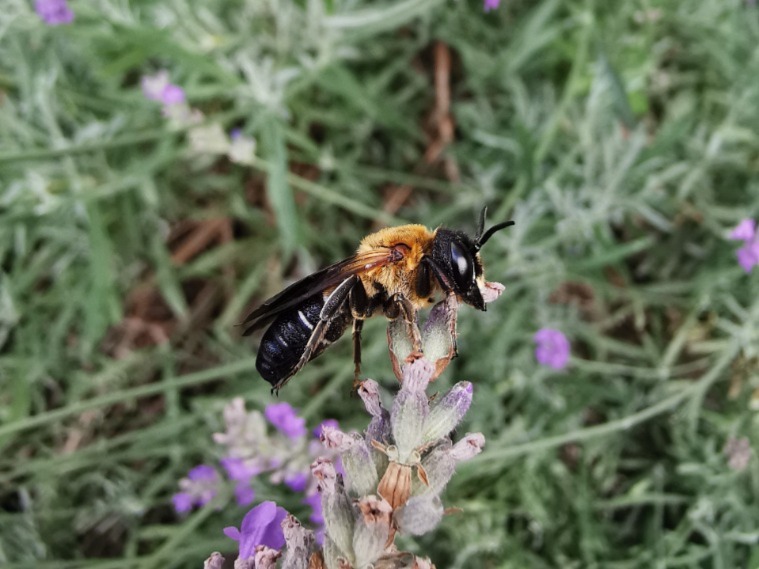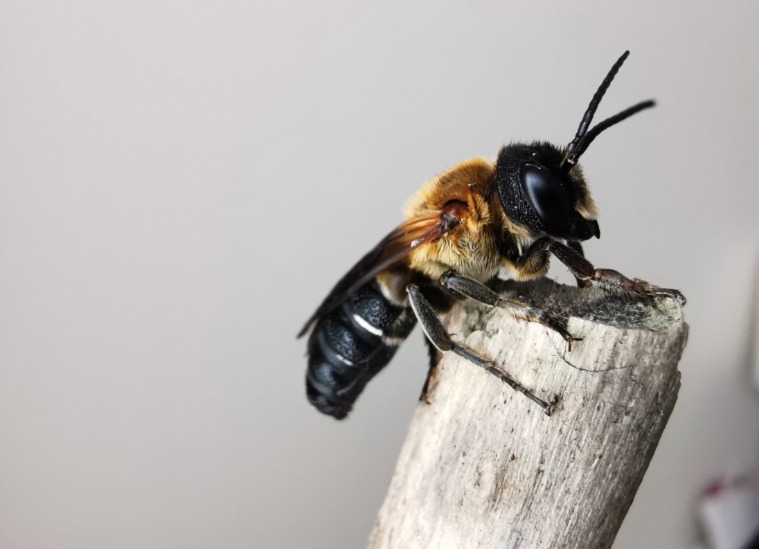A new study is published about alien bee species that is spreading across Europe
The sculptured resin bee, Megachile sculpturalis, is a potentially invasive alien pollinator in Europe. Native in East Asia. it was unintentionally introduced to North America in the nineties, and France in 2008, from where it rapidly spread across Europe. It has been present in Croatia since 2018.
The sculptured resin bee is a solitary species. Females nest in existing cavities and cracks in dead wood, similar to our native carpenter bees (genus Xylocopa). They collect plant resins to seal their nests, which is how they got their common name. They are active in the summer and collect pollen and nectar from various plant species. In Europe, they are mostly found on non-native ornamentals, such as the Japanese pagoda tree (Styphnolobium japonica) and Chinese wisteria (Wisteria sinensis). The sculptured resin bee is easy to recognize – large (larger than a honeybee), with a black head and abdomen, a light brown, hairy thorax, and opaque wings.


We still don’t have enough data to know if this species has a negative impact on our native pollinators. However, there is some evidence of competition for nesting resources and aggressive behavior, so we consider it potentially invasive. That is why it is important to continue research and monitoring.
The newly published research, in which we had a chance to participate, reports the spread of the sculptured resin bee across Southeast Europe and new data about the species’ ecology. In addition to field research by an international team of scientists, this work also involved citizen scientists. The sculptured resin bee is easy to recognize, favors populated places, and is not dangerous for humans. All of this makes it a good candidate for citizen science – a practice in which citizens collect data used for scientific research.
Interestingly, in this study, the data collected by citizen scientists covered a five times bigger geographical area than the targeted research of scientists, which highlights the advantages of this approach for monitoring. We emphasize the benefits of collaboration of citizens and formal scientists and the importance of international collaboration for monitoring. You can read the published work here.
Want to get involved? If you see the sculptured resin bee, let us know! Report your observation through the app Invasive Species in Croatia or through the contact form on this website. The report should include the location and date of observation, and a photo or video of the species. Your data will contribute to the monitoring of the sculptured resin bee in Europe and to our understanding of its impact on our native ecosystems.
Photos: J. Bila Dubaić

